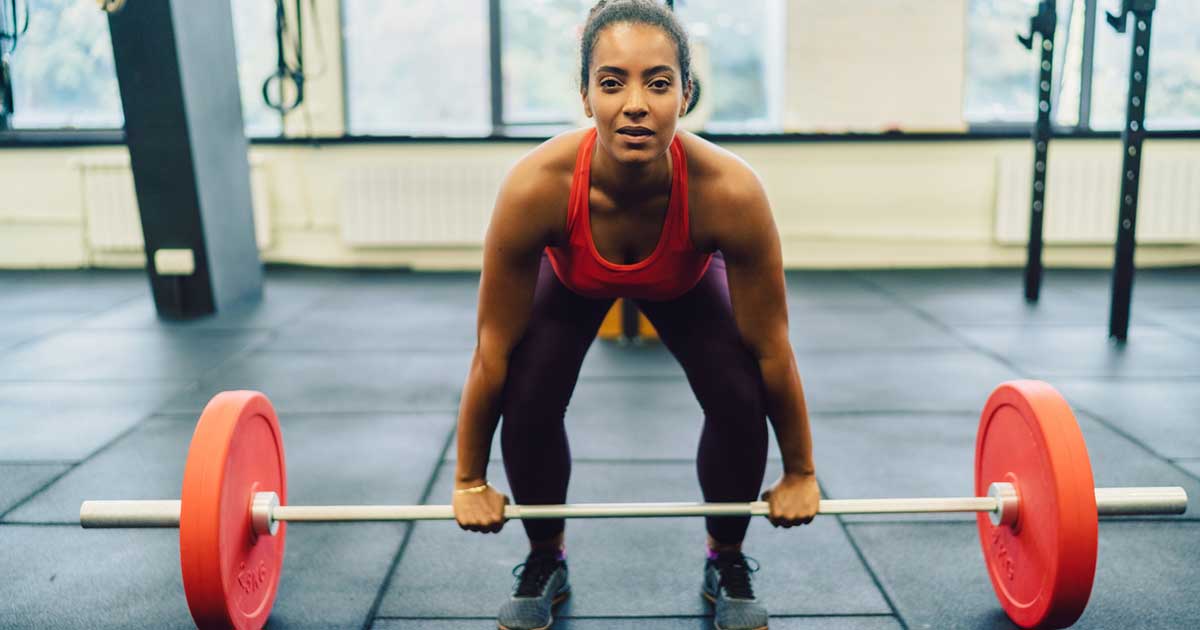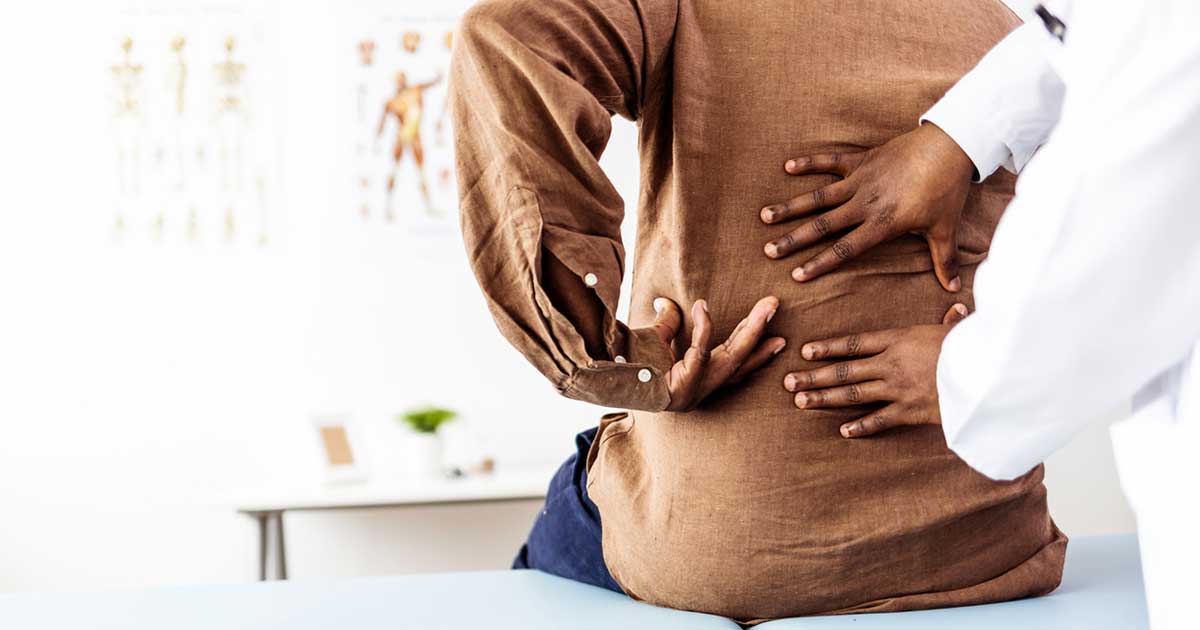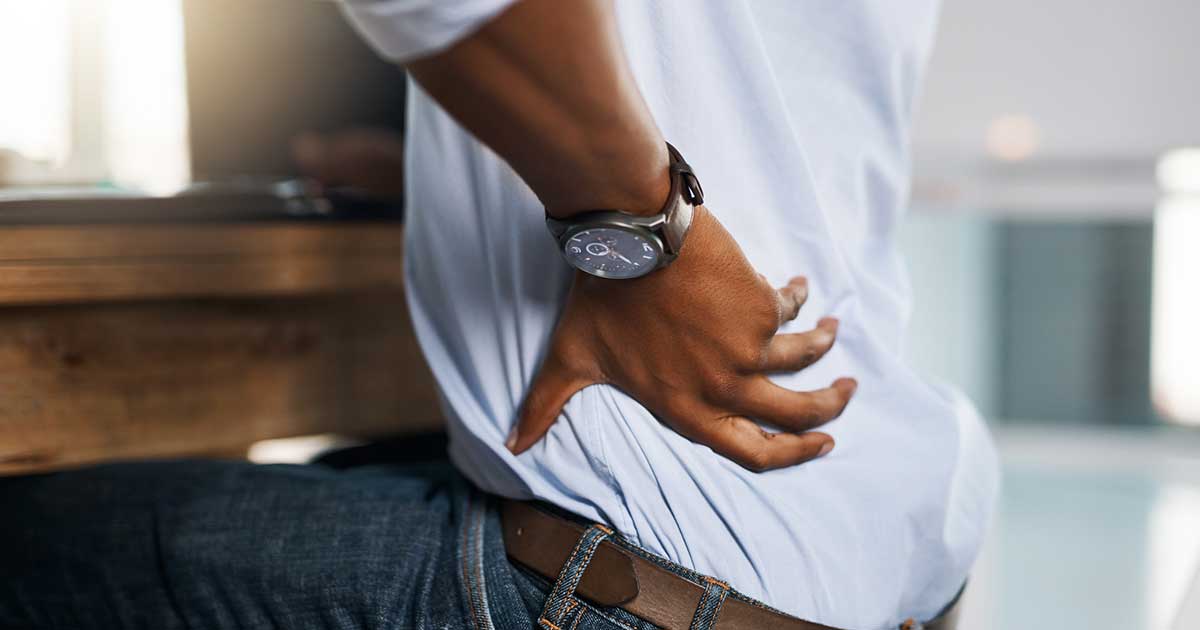Lower Back Pain After Deadlifts? Here’s How to Do Them Right
Advice to improve your movement, fitness, and overall health from the world's #1 in orthopedics.
“The hinge motion of deadlifts is a foundational component of human movement,” says HSS exercise physiologist Chelsea Long, MS, CSCS. This type of lift should work the glutes, quads, hamstrings and core. Unfortunately, what often happens is that improper technique forces other muscles to compensate and overwork, Long says. And that can lead to an aching back and a few days on the couch.

General soreness vs serious pain
First, it’s important to differentiate between soreness and pain that might signal an injury. Since deadlifts put significant stress on the area between your ribs and your hips (your lumbar spine), it’s normal for your back to be a little sore after lifting, particularly when you start out or after you increase your weights. You also may feel discomfort in your quads, hamstrings, and glutes, which is likely just delayed-onset muscle soreness, or DOMS. DOMS is temporary and comes from inflammation in the muscle after you’ve worked it hard.
But understand, that’s different from pain. “If you feel any pain during lifting, you should stop the movement, re-align, and make sure your technique is correct,” says Long. Lower the weights, or just use body weight and see if that helps, she suggests.
After your lift, if you feel any pain that’s acute, sharp, or burning, see a doctor for an evaluation. Some red flags for pain that should also be checked out: a sharp pain coming from a single spot; pain that comes on suddenly and doesn’t improve after about 72 hours; pain that affects the way you walk or your balance; and pain that wakes you up at night, radiates to your legs or causes weakness, numbness or tingling.
An on-point workout
If you’ve determined what you’re feeling is run-of-the-mill soreness, refocus on your workout prep. Always do a dynamic total body warm up, focusing on activating and contracting the areas you’re going to use. Glute bridges and core exercises such as planks and side planks will help turn on the glutes, core and sides of the body, which you want to use in your lifts. (The core is crucial for lower body movement; properly activating your abdominals helps with stability and proper energy transfer, says Long.)
An exercise called a good morning — essentially the hip-hinge portion of a deadlift — can also help activate the entire posterior chain (the muscles along the back of the body).
Next, try a warm-up set of deadlifts using light weights (or even just your body weight) to help you focus on form and technique. Once you know your muscles are contracting properly, you can move on to something heavier, says Long.
The final step is to make sure you’re using proper technique, no matter which movement you’re making.
How to do a proper deadlift
- Start with your feet shoulder width apart, knees slightly bent, weight distributed evenly between the ball and heel of your foot. Your weights (dumbbells, kettlebells, or barbell) should be on the floor slightly in front of your feet.
- Contract your core (imagine someone’s about to punch you in the stomach). Hinge your hips back as if to tap a wall behind you with your butt as your chest and head reach forward. Your gaze should follow this motion to keep your head aligned with your spine. Make sure your ribs stay stacked over your hips and you don’t arch your back.
- When you get to the point where you can’t hinge anymore because your hamstrings won’t allow it, bend your knees and keep lowering your body with your hips back until your hands reach the weights sitting on the floor.
- Inhale to prepare to lift the weights or bar. Grip the weights in both hands while squeezing your shoulders together and dropping them down your back (imagine there’s a pencil between them that you don’t want to fall). Keep your spine straight.
- Exhale and squeeze your glutes to initiate the hips driving up and forward as you stand with the weights in your hands, pressing the ground away from you.
- At the top of the stance, the front of your hips should be completely upright and your glutes squeezed, butt fully tucked under, quads tight, core engaged. This is a key step that will protect your back.
- Hinge your hips backward, head and chest reaching forward with the weights close to your body as you lower them back down to the ground and repeat.
If you’re trying a Romanian deadlift, your overall form should be similar. The main difference between these two moves is that in a Romanian deadlift, you begin by holding the weight in your hands. These work slightly different muscles; standard deadlifts are easier for people with more limited hamstring flexibility.
How to do a proper Romanian Deadlift
- Start with your feet shoulder width apart, knees slightly bent, weight distributed evenly between the ball and heel of your foot. Hold two dumbbells, a kettlebell, or a barbell in your hands in front of your upper thighs.
- Contract your core (imagine someone’s about to punch you in the stomach). Hinge your hips backward as if to tap a wall behind you with your butt, as your chest and head reach forward. Your gaze should follow this motion to keep your head aligned with your spine. Make sure your ribs stack over your hips and your back doesn’t arch.
- Keep the weights tight against the front of your legs as they move downwards, which will keep your lats engaged and help stabilize the spine. Squeeze your shoulder blades together.
- When you get to a point where your hamstrings stop you from going down any further, pause. Do not round your spine to try to get lower.
- Exhale as you squeeze your butt and drive your hips forward as you push the ground away from you with your feet. Your pelvis, hips, and shoulders should hinge up as one unit as you return to the starting position.
Always end your weightlifting session with a post-workout stretch to help keep your hips and surrounding areas mobile, says Long.
Overall, the more you exercise in every plane of motion, the stronger your deadlifts will be (and the less likely you’ll be to injure or strain your back), says Long. Some good moves to try include:
- glute bridges (single and double leg)
- dead bugs
- bird dogs
- upright rows
- lat pulldowns
- planks
Published 9/29/2022




